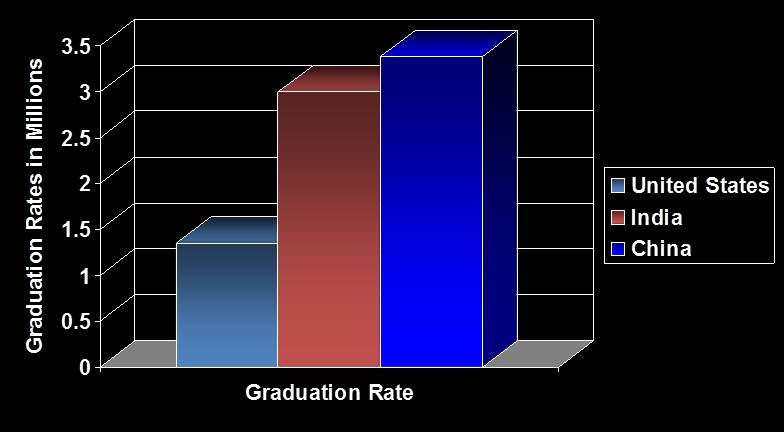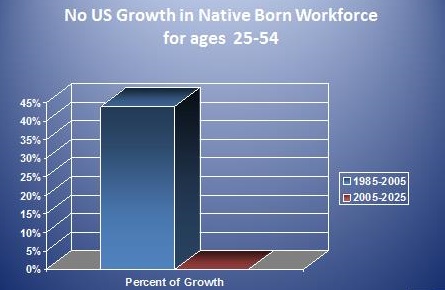 It is common knowledge that the trend for the US in educational achievement is lagging the rest of the world. We have stagnated or in many areas we are losing ground. It is also no secret to most that the trends for students of color are on an even worse trajectory. Experts agree that education is one of the most ignored crises in the United States and even though 80 percent of Americans agree that education is in crisis, ironically 80 percent also believe that the schools their children attend are just fine.
It is common knowledge that the trend for the US in educational achievement is lagging the rest of the world. We have stagnated or in many areas we are losing ground. It is also no secret to most that the trends for students of color are on an even worse trajectory. Experts agree that education is one of the most ignored crises in the United States and even though 80 percent of Americans agree that education is in crisis, ironically 80 percent also believe that the schools their children attend are just fine.
The US educational system is #17 on the list of top 20 in the world. The US lags behind Finland, South Korea, Hong Kong, Japan and Singapore which round out the top five. As the graph below shows, the US also woefully lags China and India in the number of post-secondary graduates.

A 2009 study found that U.S. students ranked 25th among 34 countries in math and science; just 6 percent of U.S. students performed at the advanced level on an international exam administered in 56 countries in 2006.
Racial and Ethnic Gaps Persist
- Relative to racial and ethnic gaps in achievement, although there is no difference in achievement between black and white children at early ages, by the time black students enter school they have lower test scores, a trend that continues throughout their education.
- Another study by The Annie E. Casey Foundation revealed that the level of reading skills children develop by third grade may predict their likelihood of graduating high school.
- Researchers estimate that between 30 and 50 percent of blacks and Latinos drop out of school before the end of the twelfth grade.
- For those Black and Latino students who stay in school, studies show they are disproportionately less likely to be placed in Advanced Placement (AP) classes, have higher suspension rates, and are more often found in special-needs classes.
- Blacks and Latinos are more likely to attend two year colleges than four year institutions, are more likely to drop out of college and are more likely to be found in remedial college programs.
- While the United States does not produce as high a proportion of White engineers, scientists and mathematicians (STEM careers) as it used to, women, Blacks and Latinos lag behind white men.
Why Should D&I Practitioners Be Concerned?
Quite simply it is a matter of the pipeline. There will essentially be no growth in the US native born workforce ages 25-54 through 2025. This will create a shortage of 14 million post-secondary educated workers and 7 million non-college educated workers by 2020. The shortages will be most prominent in STEM related positions.

Manufacturing companies were asked to describe the current availability of qualified workers in specific workforce segments:
- Thirty-two percent reported moderate to serious shortages today.
- Thirty-eight percent of all respondents foresee increased shortages ahead, particularly in the manufacturing sectors in Aerospace & Defense, in Energy & Resources and in Life Sciences & Medical Services.
- The main shortage will not be seen in unskilled labor, but in skilled production, such as machinists, operators, craft workers, distributors and technicians. Fifty-one percent report serious shortages now and anticipate more in the future
- A recent survey from Manpower, the employment agency, found that 52 percent of leading US companies reported difficulties in recruiting essential staff, up from 14 percent in 2010.
I currently hear from my clients that it is challenging to find talent to meet their staffing needs. If the education disparity trends continue, it will only get worse in the years to come. The connections are clear. The population growth is among non-whites, meaning they will make up a larger share of the labor pool in the future. There are serious educational achievement gaps for children of color. This means that there will be a smaller overall pool of skilled workers leading to an increasing need to find more talent outside the US to fill the gaps. It is in our best interest to take aggressive steps to close the gaps and increase the pool of skilled talent on our own shores.
Implications and Recommendations for D&I Practitioners:
Many companies are involved in efforts to alleviate the education gap. We need more making public education reform a top D&I priority. A study showed that more than 65 percent of corporate respondents acknowledged being engaged in various educational partnerships or initiatives. However, we need to make sure there are metrics which tie to the desired outcomes of higher graduation rates and more students qualified for the increasingly technical workforce.
Consider forging strong partnerships with educational institutions including loaned executive programs, adopting schools, internships for students, scholarships and providing advice on curriculum. Consider developing “grow your own initiatives” with these partnerships.
Understand the projected workforce gaps for your industry and ensure that you are at workforce planning tables where the solutions are being discussed.


















